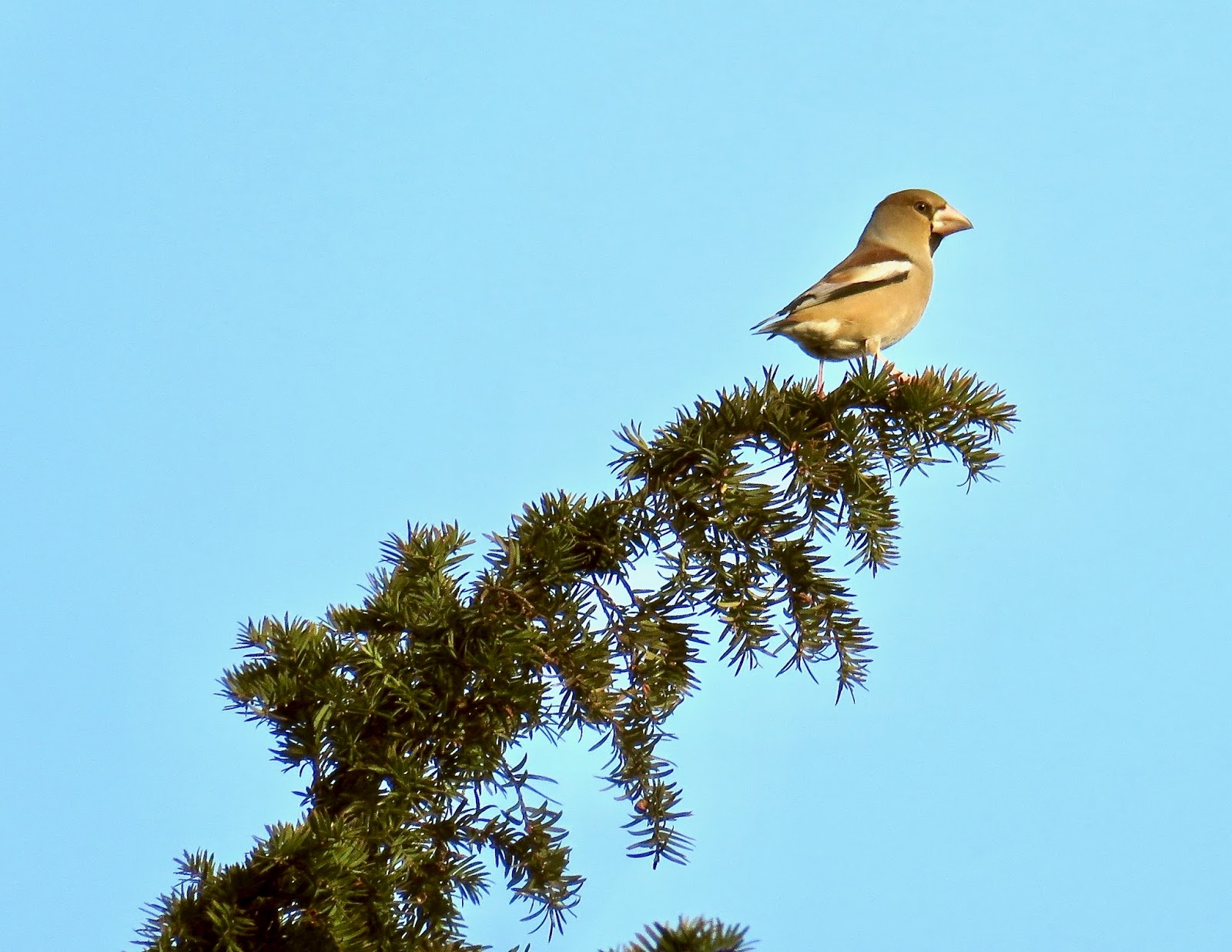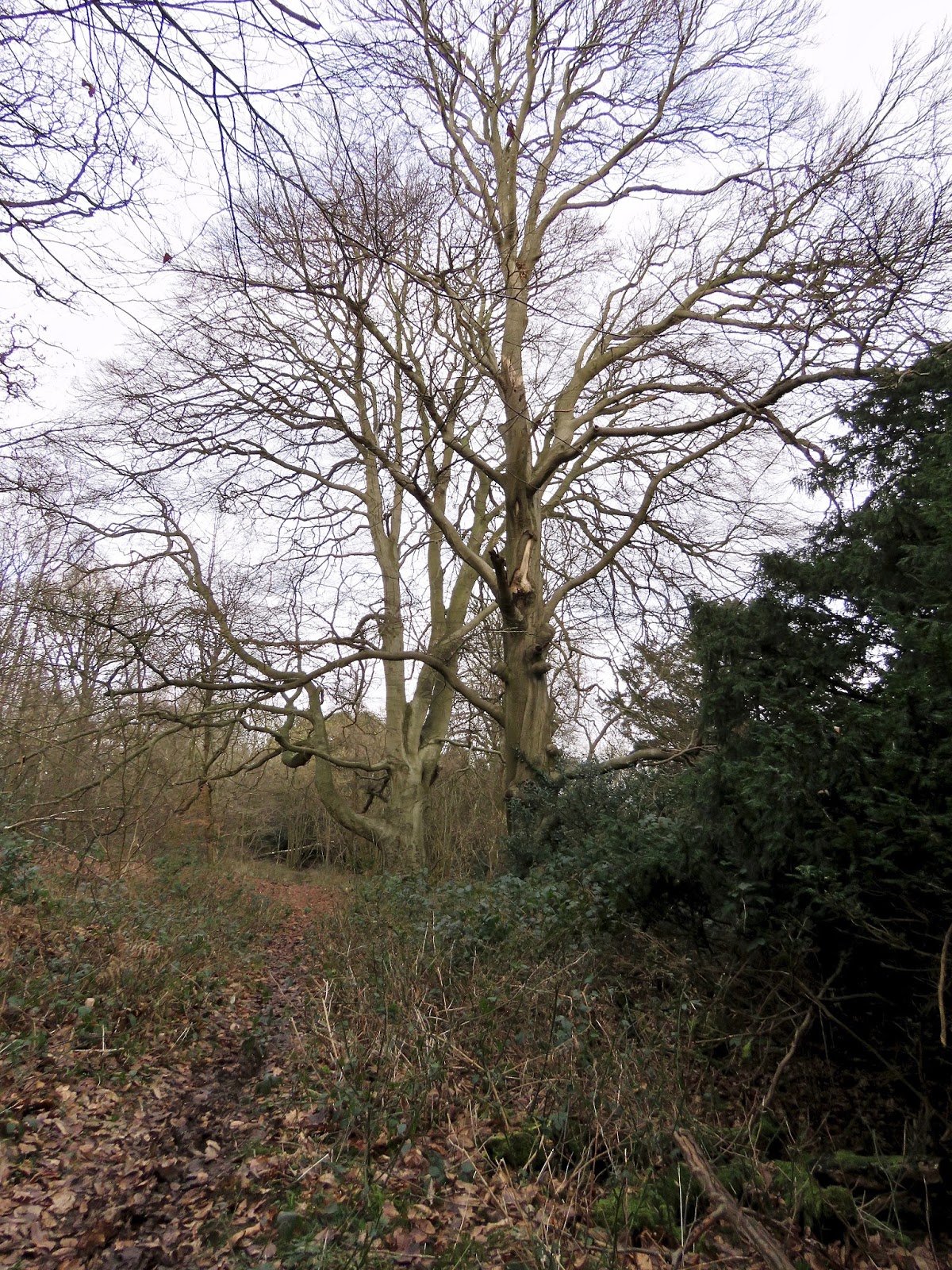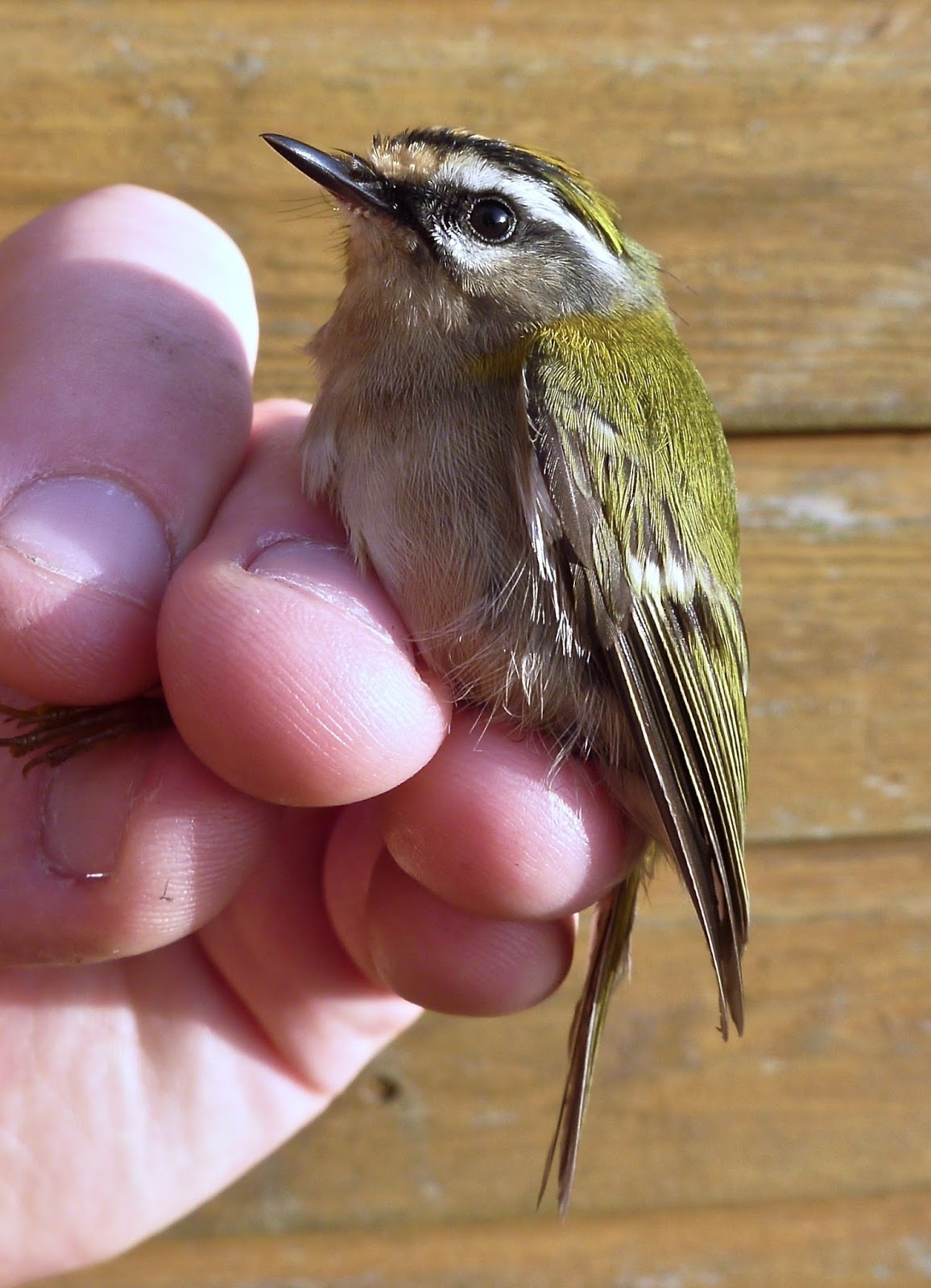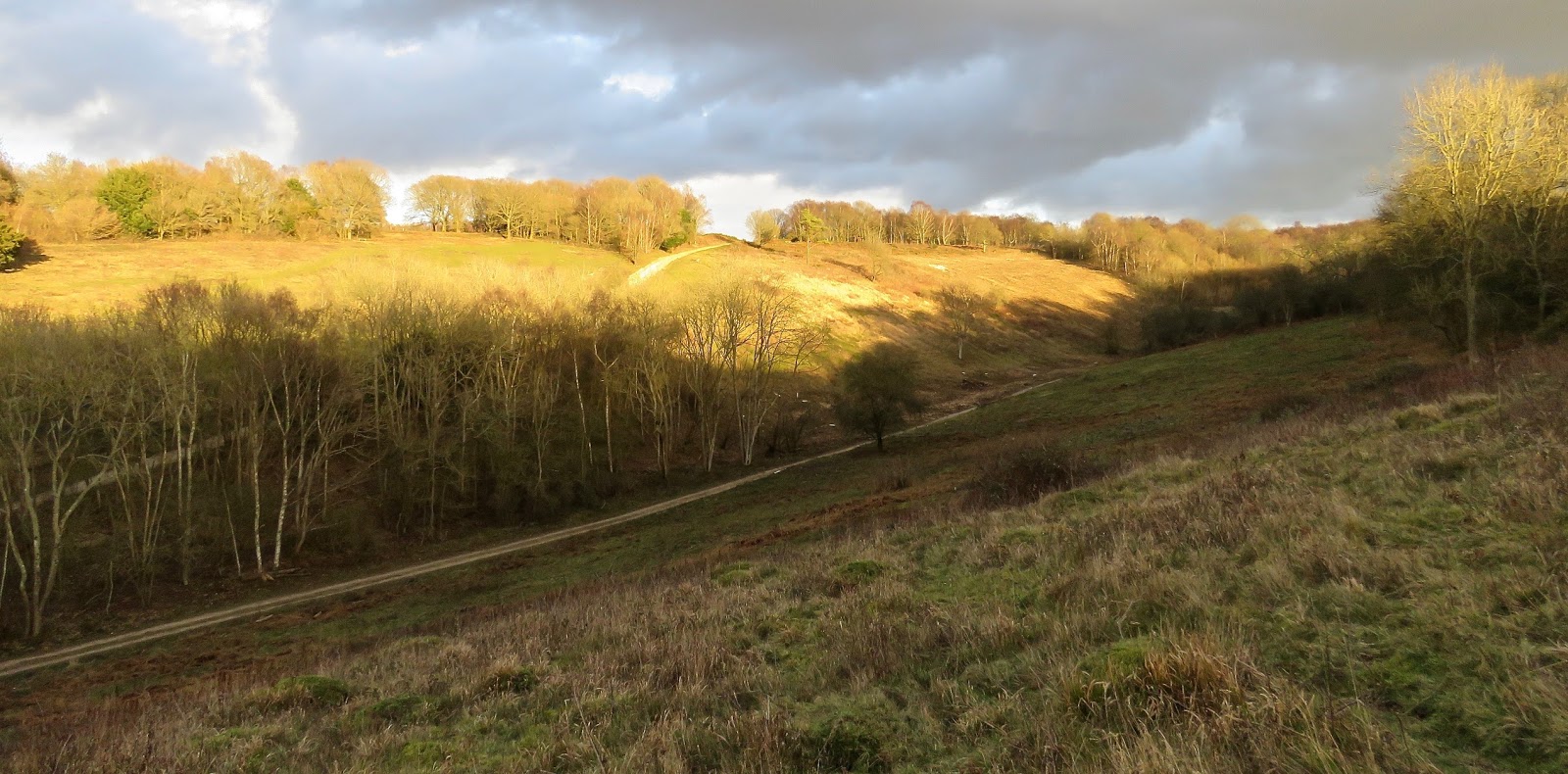The day of the Hawfinch

Warning: if you have had enough of these big-billed finches, do not continue reading... After yesterday's delights I was up for some more Hawfinch action, and arrived at Juniper Top just after 08.00hrs. The birding started well, with two Hawfinches flying up from Juniper Bottom and alighting in the area of woodland that was so productive 24 hours earlier. After waiting for twenty minutes (to see if any more birds came up from the valley) I entered the woods and headed a short way in to where most of yesterday's birds had performed so well. Although there was little calling, a tight group of 60 birds were located sitting passively at the top of several beech trees. They slowly started to drop down into neighbouring Yews, then proceeded to move away. By now they were calling frequently and were easy to follow. Some 100m further on a stand of Larches had attracted the flock, and now it became obvious that the original 60 had joined others. The calling became incessant, a whit...






